A group of well-preserved gold rush-era buildings in the regional town of Beechworth will join internationally recognised destinations, including the Great Ocean Road and Great Barrier Reef, on the country’s national heritage list.
The buildings, dating back to the late 1850s, include a courthouse where Ned Kelly faced a pretrial hearing and a sub-treasury building where miners took their gold.
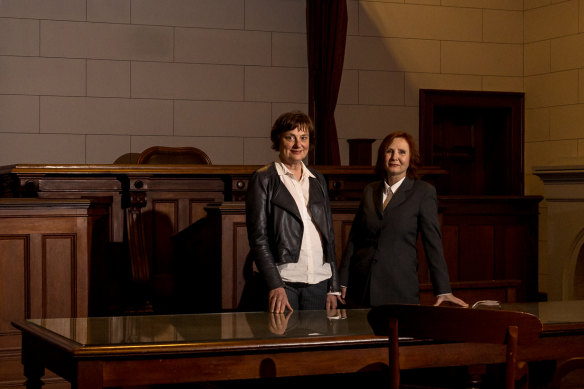
Heritage consultant Deborah Kemp (left) and historian Jacqui Durrant inside the old courthouse in Beechworth.Credit: Jason Robins
The federal government’s decision to add Beechworth’s historic administrative precinct to the National Heritage List means the buildings will be afforded additional protections to ensure they remain intact.
Any actions or activities likely to affect the precinct’s heritage values will now have to be approved by the federal environment minister. There will also be penalties for breaches of federal laws at the site.
The buildings were all constructed from locally quarried “honey” granite, which glows a gentle yellow – particularly in the afternoon sun.
“Although the precinct is in the heart of Victoria, it really helps tells the story of Australia – a timeless and intact example of our nation’s growth during the gold rush,” Environment Minister Tanya Plibersek said.
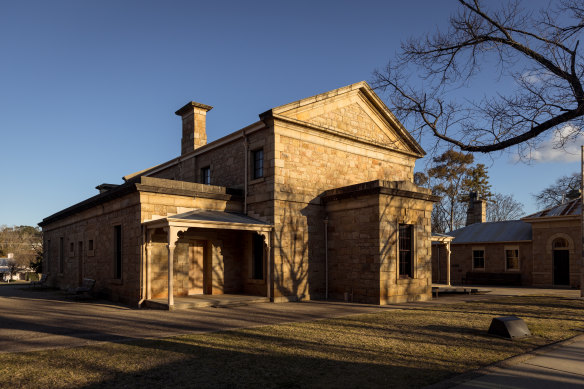
The Beechworth courthouse, built out of the “honey” granite characteristic of the area. Credit: Jason Robins
The prestigious National Heritage List contains places of outstanding significance to Australia, including natural, historic and Indigenous sites.
Some other sites on the list include Uluru, Sydney Opera House, the MCG, Rippon Lea House and Garden, Sidney Myer Music Bowl, Budj Bim National Heritage Landscape and Kakadu National Park.
The Beechworth administrative precinct is predominantly located on Crown land but is mostly managed by the Indigo Shire Council, which submitted the application for inclusion on the list.
Indigo Mayor Sophie Price said adding Beechworth to the list was recognition of the community’s efforts to preserve these important buildings over decades. She said it would also help promote Beechworth as a tourism destination.
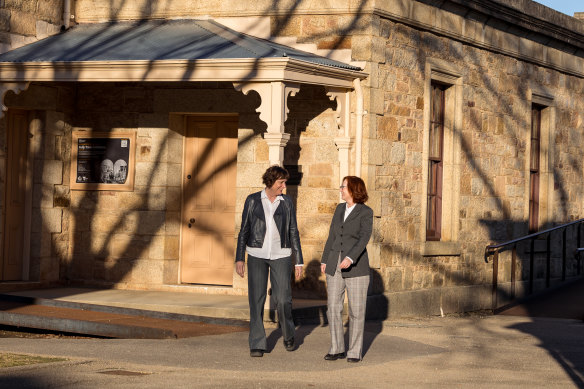
Deborah Kemp and Jacqui Durrant outside the old courthouse in Beechworth.Credit: Jason Robins
“People understand the lengths it takes to make it onto a list like this,” she said. “It’s very exclusive.”
Other buildings in the precinct include the telegraph station, jail, gold warden’s office and police stables. The Chinese Protector’s office, which also survives, was established to ensure peaceful relations with Chinese miners, who began arriving in Beechworth in numbers in 1857 after fleeing the Buckland Riot.
Beechworth’s courthouse still features its original furnishings, including Australian cedar benches and pine floors. Ned Kelly stood in the same well-preserved dock.
Behind the courtroom there is a legal library and display cabinets with a plaster death mask of Ned Kelly and the pistol believed to have been used by his brother Dan at the Glenrowan siege in 1880. The bushranger’s name is carved into the gun’s handle.
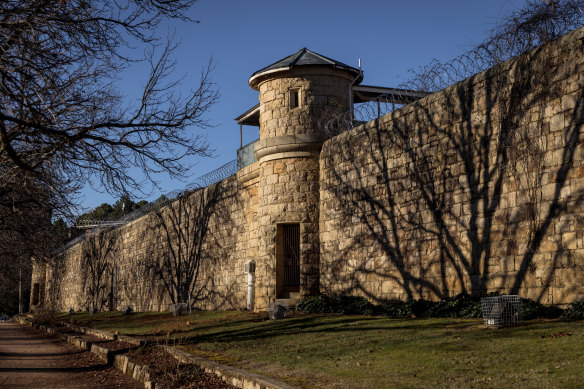
The Old Beechworth Gaol in the town’s administrative precinct. Credit: Jason Robins
Heritage consultant Deborah Kemp said it was rare for buildings in this granite style to remain in such a fine state.
“They’re a unique set of buildings,” she said. “If a miner walked in there in the 1860s it wouldn’t have looked all that different.”
The buildings had already been included on the Victorian Heritage Register. But Kemp said inclusion on the National Heritage List was the highest level of recognition for historical buildings in Australia.
“It’s recognition of generational care for a lot of the buildings.”
Gold was discovered in Beechworth in 1852 and the township was proclaimed the following year. Beyond the administrative precinct, the town centre boasts many other historic buildings, though they will not be included in the heritage listing.
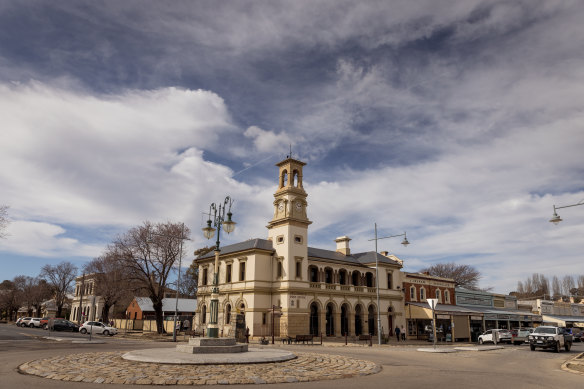
The Post Office Clock Tower in Beechworth’s main street, just outside the administrative precinct. Credit: Jason Robins
The picturesque streets are paved with granite and Kemp said the gutters have deep curves because they were designed to accommodate buggy wheels.
Historian and long-time resident Dr Jacqui Durrant said Beechworth was the best-preserved 1850s gold rush town in the world.
“This is unique on a world scale,” she said.
An entry in the Victorian Heritage Database says Beechworth was a commercial and administrative centre during the 19th century and has many historically and architecturally significant buildings. It describes Beechworth as one of Australia’s most significant goldfield towns.
“Of particular interest is the common usage of local granite in construction,” it said. “Its honey colour imparts a quality distinctive to Beechworth.”
Start the day with a summary of the day’s most important and interesting stories, analysis and insights. Sign up for our Morning Edition newsletter.